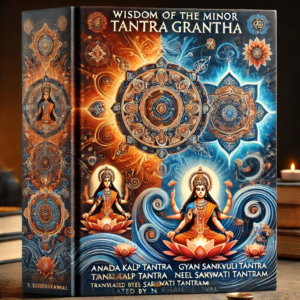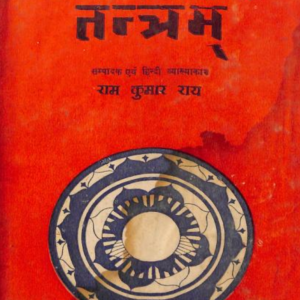Tantra
Tantra is a complex and multifaceted spiritual tradition that originated in India and has had a profound influence on Hinduism, Buddhism, and Jainism. It encompasses a wide range of practices, texts, rituals, and philosophies aimed at personal transformation and the realization of spiritual truths. The term “Tantra” is derived from the Sanskrit root “tan,” meaning “to weave” or “to expand,” reflecting the integrative and expansive nature of this tradition.
Historical Background
Origins and Development:
- Tantra is believed to have emerged around the 5th century CE, although its roots may extend further back into pre-Vedic and Vedic traditions. It developed in parallel with classical Hinduism and Buddhism, eventually becoming an integral part of these religions.
Texts:
- The Tantric tradition is documented in a vast body of scriptures known as Tantras, Agamas, and Samhitas. These texts provide detailed instructions on rituals, meditation practices, and philosophical teachings. Notable Hindu Tantras include the Kularnava Tantra, Rudra Yamala Tantra, and the Shakta Tantras. In Buddhism, the Hevajra Tantra and the Guhyasamaja Tantra are prominent.
Core Principles and Concepts
Shiva and Shakti:
- In Hindu Tantra, the divine is often conceived as a dynamic interplay between Shiva (the masculine principle, representing consciousness) and Shakti (the feminine principle, representing energy). The union of Shiva and Shakti symbolizes the merging of consciousness and energy, leading to spiritual awakening.
Mantra and Yantra:
- Mantras are sacred sounds or phrases used in Tantric practices to focus the mind and invoke divine energies. Yantras are geometric diagrams that serve as tools for meditation and ritual, representing various aspects of the divine.
Kundalini and Chakras:
- A central concept in Tantra is the idea of Kundalini, a dormant spiritual energy located at the base of the spine. Through various practices, this energy is awakened and guided through the chakras (energy centers) along the spine, ultimately leading to spiritual enlightenment.
Rituals and Sadhana:
- Tantra places a strong emphasis on ritual (puja) and personal spiritual practices (sadhana). These can include meditation, visualization, breath control (pranayama), and physical postures (asana). Tantric rituals often involve elaborate ceremonies and the use of sacred substances.
Guru-Disciple Relationship:
- The guidance of a qualified guru (spiritual teacher) is considered essential in Tantra. The guru initiates the disciple into Tantric practices and imparts esoteric knowledge that is not accessible through texts alone.
Major Schools and Traditions
Hindu Tantra:
- Shakta Tantra: Focuses on the worship of the Goddess (Shakti) in her various forms. Shakta practitioners seek to harness and transform the power of Shakti for spiritual liberation.
- Shaiva Tantra: Centers on the worship of Shiva as the supreme deity. It includes various sub-traditions such as Kashmir Shaivism, which emphasizes non-dualistic philosophy and experiential realization of the divine.
- Vaishnava Tantra: Integrates Tantric practices with the worship of Vishnu and his avatars, particularly Krishna and Rama.
Buddhist Tantra:
- Also known as Vajrayana or Tantric Buddhism, this tradition emphasizes the use of rituals, mantras, and meditation techniques to achieve enlightenment. It is prevalent in Tibetan Buddhism, where it incorporates elements of indigenous Bon practices.
Jain Tantra:
- Jain Tantra incorporates Tantric rituals and practices within the framework of Jain philosophy, focusing on spiritual purification and the attainment of liberation (moksha).
Influence and Legacy
Cultural Impact:
- Tantra has significantly influenced Indian culture, including art, literature, music, and dance. Tantric iconography, such as depictions of deities and sacred symbols, is prevalent in temple art and architecture.
Modern Interpretations:
- In recent times, Tantra has gained global interest and has been interpreted and adapted in various ways, sometimes divorced from its traditional roots. Modern interpretations often emphasize personal empowerment, sexual liberation, and holistic health.
Misconceptions:
- Tantra is sometimes misunderstood or reduced to its sexual practices in popular culture. However, sexuality is only one aspect of a much broader and deeper spiritual system. True Tantric practice is about the transformation of the individual and the realization of unity with the divine.
Conclusion
Tantra is a rich and diverse tradition that offers profound insights into the nature of reality, the self, and the divine. Its practices and philosophies provide a path for personal transformation and spiritual awakening. Despite its esoteric and complex nature, Tantra continues to inspire and influence spiritual seekers around the world, offering timeless wisdom and a holistic approach to spiritual development.
Showing all 4 results




